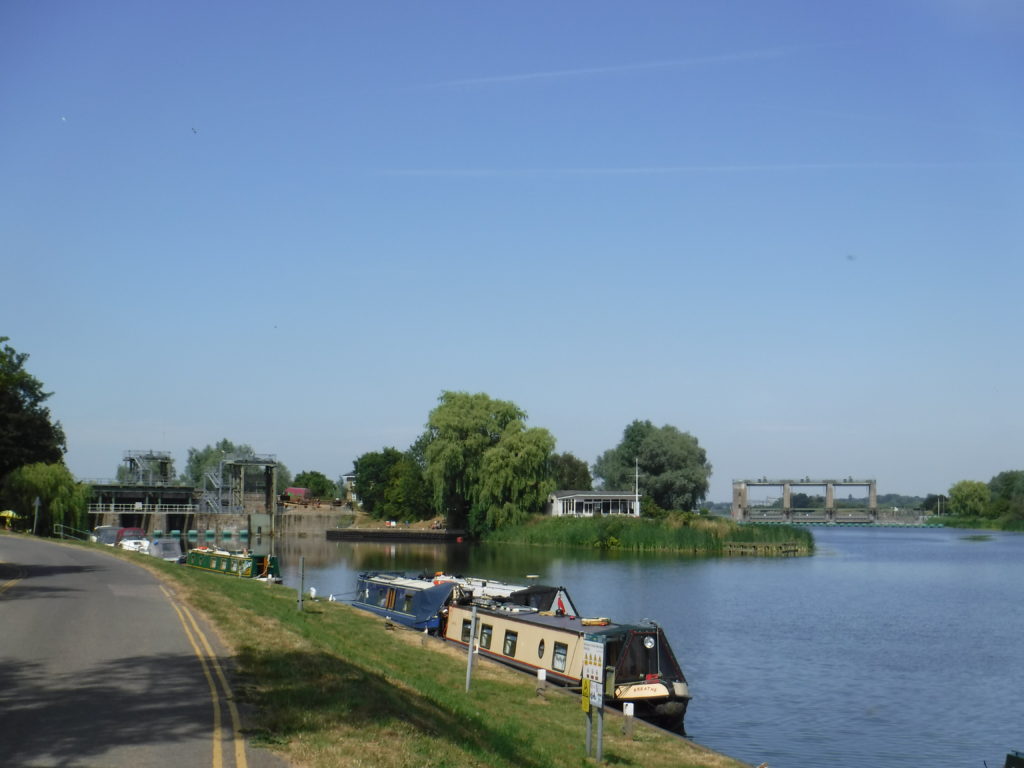Denver Sluice
Today we bid farewell to Bob and Kay who joined us in Cambridge, and headed down the Ouse to Denver Sluice.

There has been a sluice to control the flow of the Great Ouse into the sea since the 17th century. It has turned the marsh and water of the fens into England’s most productive farmland, much to the disgust of the eel fishers and duck hunters who used to make a living in the wetlands. The sluice is opened at low tide to let the river empty into the sea, and closed at high tide to prevent flooding. It hasn’t always worked perfectly. In 1953 a storm surge of six meters broke through the defenses and flooded hundreds of square miles, killing 307 people in the fens.
There is a lock to let you out to the tidal part of the river, and another one to let you back to the Middle Level Navigation, with a tricky passage in between. The locks only operate around high tide, so we are waiting till lunchtime tomorrow to go through.
You may wonder why this little settlement at or below sea level shares a name with the mile high city. For that, as for so much else, we have to blame the Belgians. Denver is a corruption of D’Anvers, an appellation given to someone from the town of Anvers in Belgium. One Roland D’Anvers came over with William the Conqueror in 1066 and settled in this part of the world, spawning many other D’Anverses. Over time both the name of the village and the family changed to Denver. People coming from the village may have adopted the name even if they were not direct descendants of old Roland.
Denver Colorado was named in a attempt to suck up to Kansas Territorial Governor James W. Denver who was probably descended from the Norfolk Denvers. He didn’t like the place, however, so they should probably have called it something interesting instead, like Wombatsnot or Pigsbottom.
There’s another theory that says Denver is a corruption of Dane’s Ford, or the place where the Vikings crossed the river, but I would far rather blame things on Belgians than Vikings.